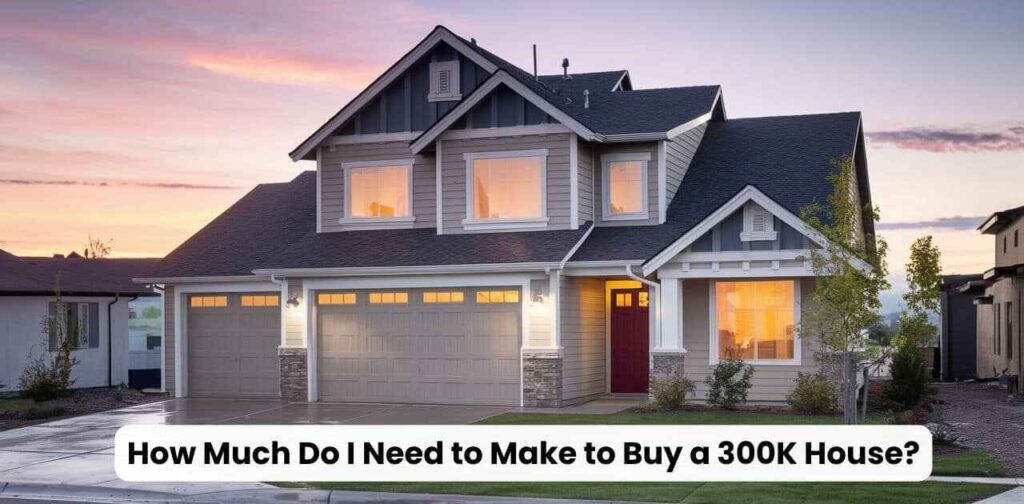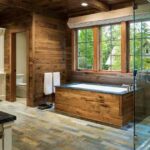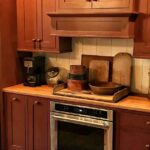Dreaming of owning a $300,000 home? You’re not alone! But before you start picking out paint colors, let’s talk money.
“How much do I need to make to buy a 300K house?” It’s a common question, and the answer isn’t one-size-fits-all. Your income needs depend on factors like your down payment, debt, and local property taxes.
Generally, you’ll want to earn around $70,000 to $100,000 annually to comfortably afford a $300K home. This assumes you’re following the 28/36 rule: spending no more than 28% of your income on housing and 36% on total debts.
Let’s break it down further and see how you can make your homeownership dreams a reality!
The Burning Question: How Much Income for a $300K House?
The minimum income needed to buy a $300K house ranges from $56,000 to a whopping $110,743 per year. That’s a massive spread, right?
The exact number depends on several key factors:
- Your down payment amount (more on this later)
- Your interest rate
- Other monthly debts and financial obligations
- Location and associated costs like property taxes
Generally speaking, most lenders want your monthly mortgage payment to stay under 28% of your gross monthly income. But some loans allow payments up to 50% of your income if you qualify.
So while $110K covers the high end, plenty of folks can swing a $300K home on much less especially with clever strategies like down payment assistance programs.
Crunching the Numbers: Monthly Mortgage Payments
Knowing the total price tag is one thing, but your real focus should be on those monthly mortgage payments. They determine if this big purchase will actually fit your budget or quickly become a burden.
Mortgage Calculator for a $300K House
Want to run some quick numbers? Here’s a mortgage calculator to estimate your monthly payment on a $300K home:
| Details | No Down Payment | 5% Down ($15K) | 10% Down ($30K) |
| Home Cost | $300,000 | $300,000 | $300,000 |
| Down Payment | $0 | $15,000 | $30,000 |
| Interest Rate | 7.31% | 7.31% | 7.31% |
| Principal & Interest | $2,024 | $1,956 | $1,887 |
| Property Taxes* | $150 | $150 | $150 |
| Homeowner’s Insurance* | $50 | $50 | $50 |
| PMI (If Applicable) | $320 | $162 | $0 |
| Total Monthly Payment | $2,544 | $2,318 | $2,087 |
- Estimated Colorado property taxes and average homeowner’s insurance costs included. Your location may vary.
- As you can see, putting more money down lowers your total monthly nut quite a bit especially when you can avoid paying private mortgage insurance (PMI).
Other Costs to Consider: Closing Costs and Repairs
Your mortgage payment covers the big guys like principal, interest, taxes and insurance. But it doesn’t include the $10,000+ in closing costs or funds for ongoing home maintenance and repairs.
Most folks roll closing costs into their mortgage to avoid paying upfront. But it still increases your total home cost, which impacts the income needed.
And trust me, you’ll want a little padding in the budget for when the water heater dies or the roof needs replacing. Putting even $100/month into a home repair fund can save you from going into debt down the road.
What if I Have No Down Payment?
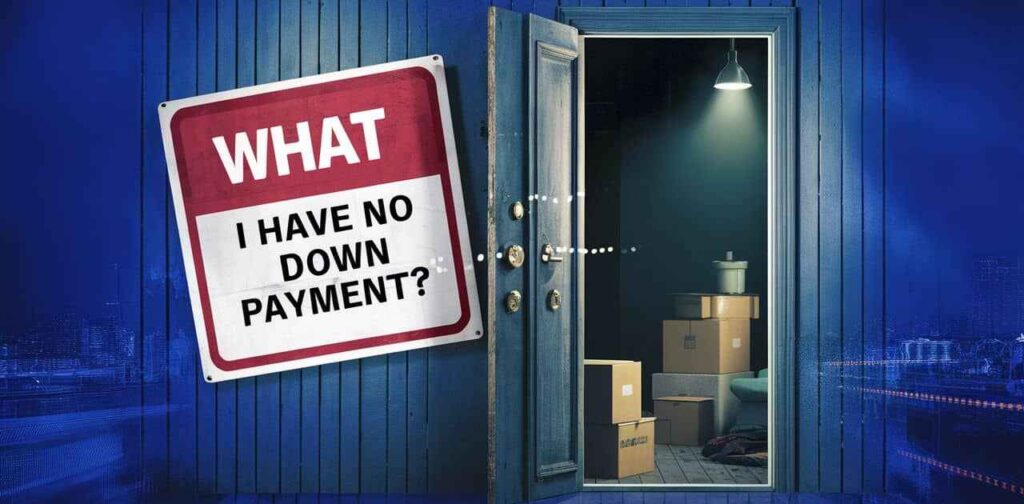
A huge down payment is tough, especially for first-time homebuyers. The good news?
You can still buy a $300K home with $0 down.
You’ll need to make between $86,133 and $110,743 per year to keep that monster mortgage payment under 50% of your monthly income.
No down payment means paying private mortgage insurance (PMI) premiums until you hit 20% equity. It’s an added cost, but one that can be well worth it to get into your dream home sooner.
What if I Get Down Payment Assistance?
Okay, so handing over $30K for a down payment isn’t realistic for everyone. But what if you could get a huge chunk of that covered?
Enter: down payment assistance (DPA) programs. These help out with grants, loans, and other financial assistance to beef up your down payment funds.
How it Works:
- Locate DPA programs through your state, local governments, banks, and organizations
- Apply and receive funds that don’t need to be repaid (aka free money!)
- Use the assistance to make a bigger down payment and reduce mortgage costs
With $10K-$30K+ in assistance, that $300K dream home just got way more affordable:
| Down Payment | $10,000 | $20,000 | $30,000 |
| Total Monthly Payment | $2,504 | $2,281 | $2,168 |
Stairs Financial makes it easy to find DPA programs you qualify for and compare your options side-by-side. It’s a total game-changer when it comes to making homeownership attainable on a modest income.
Can I Afford the Payments on a $300K House With My Income?
Calculating the payment is step one, but ensuring it fits comfortably in your budget is key. This is where the tried-and-true 28/36 rule comes into play.
Your Budget: Following the 28/36 Rule
You’ve probably heard this rule mentioned by financial gurus. It states:
- Your housing expenses (mortgage payment + other costs) should be no more than 28% of your gross monthly income.
- Your total debt payments (including housing) should be under 36% of your gross monthly income.
Sticking to this guideline helps avoid getting overextended on your home purchase. It ensures you can actually enjoy your new digs without scrambling every month.
Here’s a look at the income required at different down payments while following the 28/36 rule:
| Down Payment | Monthly Payment | Required Gross Income (28% Rule) |
| $0 | $2,544 | $109,029 |
| $15,000 | $2,318 | $99,343 |
| $30,000 | $2,087 | $89,571 |
But hey, rules were made to be broken – at least a little. Many lenders will approve mortgages with payments up to 50% of your monthly income if you have minimal other debts.
3 Examples of Affordability for a $300K House
To give you a better picture of whatittakes at different income levels, here are some real-world examples of home affordability:
| Details | Example 1 | Example 2 | Example 3 |
| Gross Income | $77,550 | $55,632 | $69,540 |
| Down Payment | $15,000 | $15,000 | $15,000 |
| Monthly Payment | $2,318 | $2,318 | $2,318 |
| Other Debts | $267 | $0 | $110 |
| Debt Ratio | 35/40 | 50/50 | 40/42 |
As you can see, even at a relatively low $55,632 income, this home could be affordable by pushing the payment to 50% of your gross income if you’re debt-free.
Sure, it’s a stretch – but one that could be worth it to get into your forever home. It all comes down to your full financial picture and comfort levels.
What Factors Determine How Much You Can Afford?
There’s no one-size-fits-all salary that makes a $300K home affordable or not. Several key factors heavily influence what you can reasonably take on:
Down Payment
This is the biggest line item that impacts your affordability. A larger down payment = lower monthly mortgage payments and less interest paid over time.
Even going from 5% to 10% down can save you $100s per month. Definitely leverage down payment assistance if it’s an option!
Financing Options
The type of mortgage you get also plays a big role. FHA, VA, Conventional – they all have different income and credit requirements that impact affordability.
Credit Score
A high credit score helps you qualify for the lowest interest rates, which means paying less over the life of your loan. If your score needs work, take some time to pay down debts and fix any errors before applying.
Even a 1% difference in mortgage rates can mean hundreds per month in savings. It pays to get your credit in top shape!
Debt-to-Income Ratio
This compares your recurring monthly debt payments to your gross monthly income. Lenders want to see a reasonable DTI, typically under 43%, to ensure you can comfortably cover the new mortgage plus existing debts.
Paying off things like credit cards, student loans, and auto loans before buying can really increase your purchasing power.
Loan-to-Value Ratio
Your LTV is calculated by dividing the mortgage amount by the home’s value. Having an LTV over 80% usually requires paying private mortgage insurance (PMI) until you reach 20% equity.
A larger down payment reduces your LTV and overall loan size, which are both beneficial.
Related Post:
A Look Inside Elon Musk’s Tiny $50,000 House
Go Further on $300K With Down Payment Assistance
We’ve talked a lot about down payment assistance and how it can be a total game-changer but what exactly is it?
Down payment assistance, or DPA, refers to special programs that provide funds to help cover your down payment and closing costs when buying a home. This money can come in the form of:
- Grants that don’t need to be repaid
- Low/No interest loans
- Forgivable loans
- Tax credits
These DPA programs are offered through state and local housing agencies, banks, nonprofits and other organizations. The funds can be a massive boost in both affording your down payment and lowering your overall monthly costs.
For example, let’s say you qualify for $25,000 in down payment assistance on your $300K home purchase. Your down payment is now 25% instead of 3.5%, which has major benefits:
- PMI is eliminated, saving $100s per month
- Your LTV is lowered to 75%, strengthening your approval odds
- Total mortgage payment drops to $2,087 from $2,544 (with no down payment)
- Income needed decreases from $110K to under $90K
Stairs Financial makes it easy to see all the DPA programs you’re eligible for based on your specifics. Their modern platform lets you compare different options side-by-side to make the best choice.
This type of assistance isn’t as well-known, but it can be the difference between settling for less home or buying your forever house. It’s absolutely worth exploring if $300K is your goal.
Tips for Increasing Your Homebuying Power
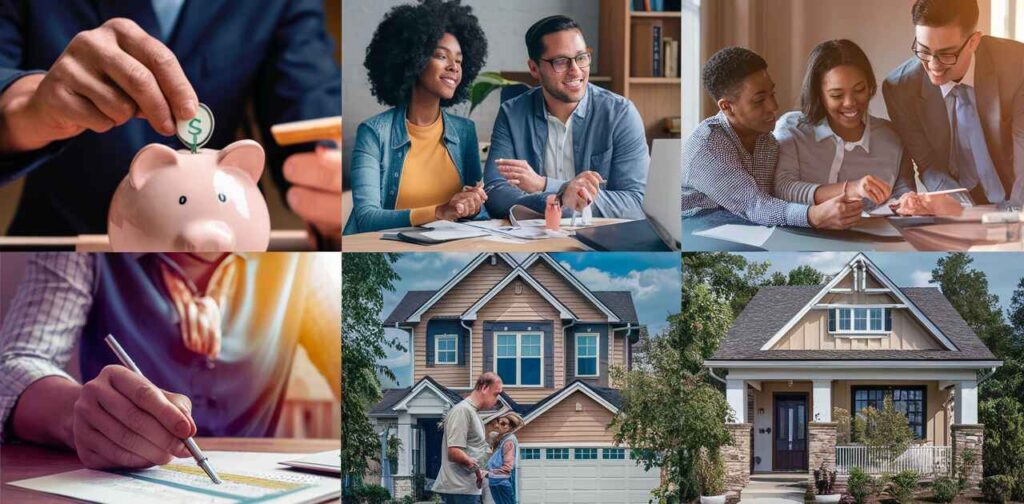
While the numbers above give you a general idea of affordability, there are always steps you can take to tip the scales in your favor:
Boost Your Income
- Ask for a raise at your current job and quantify your accomplishments
- Take on a side gig or freelance work for supplemental income
- Get training and certifications to qualify for higher-paying roles
Improve Your Credit Score
- Pay down credit card balances to reduce utilization
- Fix any errors on your credit reports through disputes
- Become an authorized user on someone else’s longtime, positive account
Explore Alternate Lending Programs
- VA loans require no down payment or PMI for military members
- FHA loans allow lower credit scores and down payments as low as 3.5%
- Local first-time homebuyer programs offer down payment assistance
- Adjustable-rate mortgages have lower initial rates (but adjust over time)
Even small improvements in your financial profile can make a meaningful difference in your max home price and overall costs.
Your Next Steps: Are You Ready to Buy?
At the end of the day, the numbers are just guidelines. Whether or not a $300K home makes sense comes down to your full financial situation and goals.
If you’re feeling confident after running the numbers, here are the next steps to take:
- Evaluate Your Full Financial Picture Look at your monthly income, existing debts, down payment savings, and credit profile. Where do you stand realistically on affording this purchase?
- Get Pre-Approved for a Mortgage This will give you an accurate look at your max home price, interest rates, and monthly estimates based on your finances.
- Work With a Reputable Real Estate Agent Let them know your pre-approved figure and wish list. They’ll help you find and negotiate the right $300K property.
Stay the Course Until You Actually Close
Even after getting pre-approved, it’s important to maintain your financial discipline until the home purchase is complete and official.
Lenders will re-check your credit, income, and debts before the final closing. Any major changes like switching jobs, opening new credit accounts, or making large purchases could jeopardize your approval status.
Avoid changing anything about your financial profile and keep paying all bills on time. You don’t want to inadvertently derail the homebuying process after all that preparation!
$300K Home With Down Payment Assistance
We’ve covered how leveraging down payment assistance programs can be an absolute game-changer in affording a $300,000 home. But finding accurate program details on your own can be incredibly difficult.
That’s where a service like Stairs Financial provides tremendous value. Their technology lets you quickly see which DPA programs you may qualify for based on factors like:
- Location
- Income
- Household size
- First-time buyer status
- Desired loan program (FHA, VA, conventional, etc.)
From there, you can easily compare the available options for downpayment and closing cost assistance side-by-side. This streamlines your research so you can make the most informed decision.
Plus, Stairs connects you with lenders who are experts in utilizing those specific DPA programs. It’s a huge advantage over going it alone.
Best of all, their service is 100% free for homebuyers. Using Stairs tools costs you nothing, while potentially saving you tens of thousands!
Home Affordability and Budgeting FAQs
We’ve covered a ton of details around budgeting for and affording a $300,000 home purchase. But you may still have some specific questions, so let’s rapid fire through some of the most common ones:
Can I afford a $300K house on a $100K salary?
Yes, in most cases a $300,000 home is very affordable on a $100,000 household income. Even with little or no downpayment, your maximum mortgage payment would be around 31% of your gross monthly income using the 28/36 budgeting rule. With a 20% down payment, it drops to under 20% of your monthly income.
Can I afford a $300K house on a $70K salary?
While it will require some added financial discipline, buying a $300K home on a $70K salary is definitely attainable. You’ll likely need to budget up to 35-40% of your gross income towards the mortgage payment. Utilizing down payment assistance and shopping for the best rates will increase your affordability.
Can I afford a $300K house on a $60K salary?
For a $60,000 annual household income, lenders generally want to see a maximum mortgage payment of no more than $2,000-$2,500 per month (around 50% of your gross income). While tight, this does put a $300,000 home purchase within reach if you have limited other debts. Putting even 5-10% down will help greatly.
Can I afford a $300K house on a $50K salary?
It will be difficult but not impossible to afford a $300K mortgage on a $50,000 salary. You’d likely need both a significant down payment (10%+) through a DPA program and very minimal other debt obligations. This purchase will eat up a large chunk of your monthly income, so budgeting is critical.
Can I afford a $300K house on a $40K salary?
For most households making $40,000 annually, a $300,000 home is likely out of realistic reach. At this income level, you’ll generally need to look at the $150,000 – $225,000 price range to keep mortgage costs from being an excessive 50%+ of your gross monthly income.
How much is a monthly payment on a $300K house?
The total monthly payment on a $300,000 mortgage will typically range from $1,850 to $2,585 depending on:
- Your down payment amount
- Mortgage interest rate
- Property taxes in your location
- Homeowners insurance costs
- Whether private mortgage insurance (PMI) is required
Putting at least 20% down allows you to avoid PMI and net the lowest possible payment.
What income do I need to buy a $400K house?
As a general rule, you’ll need an annual household income of at least $82,000 to afford the mortgage on a $400,000 home if putting little-to-no money down. Following the 28% rule for housing costs, you’d need closer to $120,000 – $145,000 in income to keep payments at a reasonable level.
How much do I need to make to buy a $200K house?
For a $200,000 home purchase, most lenders will require a minimum income of around $38,000 – $45,000 if putting little or no money down. This allows the mortgage payment to stay under 50% of your monthly gross income. Following the 28% budgeting guideline, you’d need an income of $55,000 – $75,000.
How much do I need to make to buy a $250K house?
A good estimate is needing an annual household income between $47,000 – $95,000 to comfortably afford a $250,000 home. This range accounts for factors like:
- Your down payment amount (more is better)
- Your existing debts and liabilities
- Property taxes and insurance in your market
- Interest rates on your mortgage loan
What is the ideal salary to buy a $300K-$350K house?
There’s no definitive “ideal” income for this home price range, as it depends heavily on your specific financial situation. However, most experts recommend a minimum household income of around $85,000 to realistically afford a $300,000 – $350,000 mortgage while following the 28/36 budgeting rule.
I make $80,000 a year. Can I buy a $300,000 house?
With an $80,000 annual household income, buying a $300,000 home should be very feasible as long as your other debts are managed.
Even with just a 5% down payment, your mortgage payment would be around 35% of your gross monthly income. Put 10% down, and it drops to under 30% of your monthly income—well within the 28/36 budgeting rule.
How much do I need to make to buy a $300K house FHA?
For an FHA loan on a $300,000 home with the minimum 3.5% down payment, most lenders will want your mortgage payment to be no more than 31% of your gross monthly income. This equates to a minimum income around $60,000 – $65,000 per year before other debts.
How much do I need to make to buy a $400K house?
To comfortably afford a $400,000 mortgage while following the 28/36 rule for housing costs, you’ll generally need an annual household income between $100,000 – $145,000. This income range allows for putting anywhere from 5% to 20% down on the home purchase.
How much down payment for a $300K house first-time buyer?
As a first-time buyer aiming for a $300,000 home purchase, most experts recommend trying to put down at least 10% if possible. So that would mean coming up with a $30,000 down payment.
However, there are loan programs like FHA that allow lower down payments of just 3.5% ($10,500) for borrowers meeting eligibility requirements. Down payment assistance programs can also help prospective buyers cover upfront costs.
The bottom line on your required income amount is that it’s heavily dependent on your full financial profile beyond just your annual salary. The quotes above provide a general idea, but you’ll need to take a detailed look at your:
- Down payment savings
- Monthly debts and liabilities
- Credit profile and scores
- Liquid assets and reserves
- Overall budget and spending patterns
To get a truly accurate picture, it’s best to go through the pre-approval process with a qualified mortgage lender. They can analyze your specific finances and map out the loan programs, home prices, and monthly payments that fit your situation.
Buying a $300,000 home may seem daunting, but it’s much more attainable than many people realize – especially when you leverage strategies like down payment assistance.
Hopefully this guide has given you the insights needed to make an informed decision and effective plan for pursuing your dream home. Don’t hesitate to reach out if you have any other questions!
Read more related home improvement blogs
Arsenal Star Bukayo Saka’s Hertfordshire Home
NAVIGATING BUILDING ON YOUR OWN LAND
WHAT IS GERMAN SCHMEAR FOR BRICK VS. MORTAR WASH VS. LIMEWASH?

Howdy is behind this home blog, sharing personal stories, thoughts, and insights from daily life. I can dedicated to bringing you the latest trends, expert advice, and creative ideas to make your home the sanctuary you’ve always dreamed of. Whether you’re looking for DIY tips, home decor inspiration, home loans, rentals or renovations.

